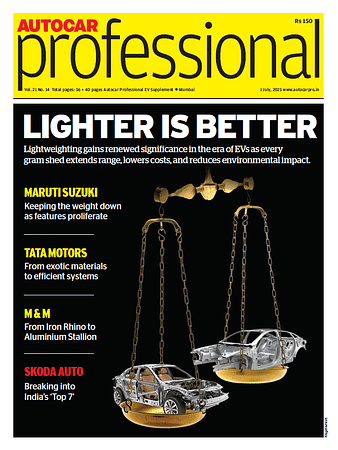Chips shortage to continue for 12-18 months
Because of the semiconductor issue and the ongoing war, the prices of cells are in the reversal mode said the Executive Director of Bajaj Auto.
The Russia-Ukraine war, lockdowns in China amid the new Covid wave and supply chain issues are some of the factors that are challenging EV makers, said Rakesh Sharma, Executive Director, Bajaj Auto. As a result, he pointed out, it could take ‘around 12-18 months for the volatility to settle down’.
Speaking at the Autocar Professional’s two-day EV conclave, Sharma was of the opinion that the only way is for the supply side to be improved. He said that while demand is coming back, new capacities have to come on stream. The other issue is technological development, he added.
“We were watching all these before making big bets or plans. Now, the industry is in the period of equilibrium. Until the new supply chain capacity does not come on stream, we will have to cope with the current situation,” he said.
Sharma also said that because of the semiconductor issue and the ongoing war, the prices of cells are in the reversal mode. “It has gone to the price level that prevailed as of 2019,” he stated. The prices which should have been much lower to what it has been in the year before. The battery cell costs are not looking good because of the supply-demand situation, he reiterated.
“While supply has shrunk because of all these various factors, on the one hand, demand has increased not just from two-wheeler but also four-wheelers as well, and there is a huge boom in favour of li-ion cells. This imbalance has disrupted the pricing and has to be carefully monitored,” Sharma mentioned.
In his address, Sharma also said that the TCO is the single most factor that is driving the transformation of ICE to EV. “The operating cost is driven by the battery cost and the initial ownership cost is high because of the battery cost. The cell price and the TCO will go up. And if the balance changes, how customers respond to it matters,” he said
"We have to look at the day by day, month to month and quarter to quarter basis to work in these situations. The leadership in companies has to have the ability to work on short term horizons and at the same time keep tabs on the long term trends," he signed off.
RELATED ARTICLES
Modern Automotives targets 25% CAGR in forged components by FY2031, diversifies into e-3Ws
The Tier-1 component supplier of forged components such as connecting rods, crankshafts, tie-rods, and fork bridges to l...
VinFast’s second plant in Vietnam goes on stream ahead of India factory
Vietnamese EV maker’s second plant in its home market, which has a 200,000 EVs-per-annum capacity, will focus on produci...
Continental exits TBR market in India, shifts focus to car and SUV radials
German tyre manufacturer aims to tap the double-digit market growth opportunity for big SUV and luxury car tyres which w...





 26 Apr 2022
26 Apr 2022
 4336 Views
4336 Views





 Autocar Professional Bureau
Autocar Professional Bureau




